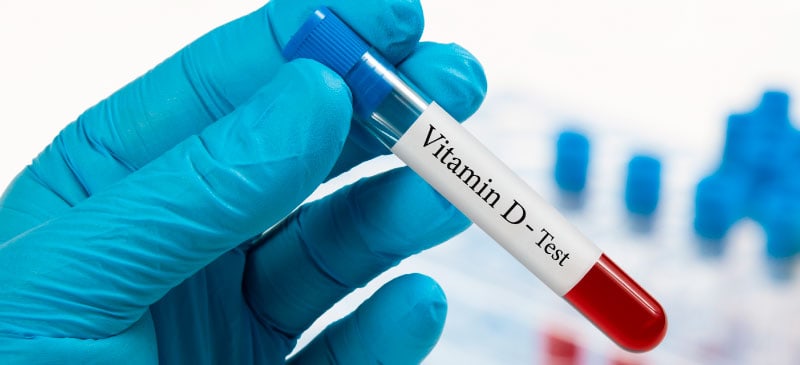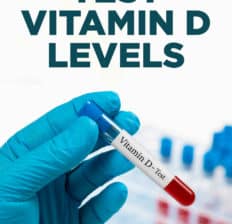This Dr. Axe content is medically reviewed or fact checked to ensure factually accurate information.
With strict editorial sourcing guidelines, we only link to academic research institutions, reputable media sites and, when research is available, medically peer-reviewed studies. Note that the numbers in parentheses (1, 2, etc.) are clickable links to these studies.
The information in our articles is NOT intended to replace a one-on-one relationship with a qualified health care professional and is not intended as medical advice.
This article is based on scientific evidence, written by experts and fact checked by our trained editorial staff. Note that the numbers in parentheses (1, 2, etc.) are clickable links to medically peer-reviewed studies.
Our team includes licensed nutritionists and dietitians, certified health education specialists, as well as certified strength and conditioning specialists, personal trainers and corrective exercise specialists. Our team aims to be not only thorough with its research, but also objective and unbiased.
The information in our articles is NOT intended to replace a one-on-one relationship with a qualified health care professional and is not intended as medical advice.
Vitamin D 25 Hydroxy Test: Purpose, Procedure & Results
October 23, 2022

Because vitamin D plays many important roles related to maintaining overall health, especially those involved in bone health and immune function, it’s important to know whether you’re getting enough of this nutrient. Health care providers use the vitamin D 25 hydroxy test to do just this: to determine if someone could benefit from consuming more vitamin D or, less often, to check if someone is taking too much vitamin D in supplement form.
While sunlight exposure is the best way to maintain normal vitamin D levels, we know that many children and adults don’t spend enough time in the sun regularly, and therefore, deficiencies are common. This is why the vitamin D hydroxy test is performed relatively often to screen for abnormal levels.
What Is the Vitamin D 25 Hydroxy Test?
The vitamin D 25 hydroxy test is used to measure your vitamin D level, or how much vitamin D is currently in your body. It’s considered the most accurate test for this purpose.
It measures the active type of vitamin D in your blood, which is the type that your body makes after being exposed to the sun or converts once you consume foods and supplements with vitamin D.
This type of test involves drawing a sample of blood, usually from a vein in someone’s arm. It can be done at a doctor’s office or laboratory and is relatively simple and straightforward.
Other names that this procedure goes by include: 25-hydroxyvitamin D, 25(OH)D, cholecalciferol test, ergocalciferol test, calcidiol test, vitamin D2 test or vitamin D3 test.
Purpose of the Test
The main point of the vitamin D 25 hydroxy test is to determine if someone is deficient in vitamin D or not. This way, it can be determined if supplementing with vitamin D would be helpful.
Most often it’s performed on people who are suspected to be lacking vitamin D, such as older adults or those showing signs of vitamin D deficiency — which can include fatigue, poor immune function, bone pain, weakness and depression.
People who are most likely to receive this test include:
- Those with a history of low vitamin D levels
- Those who have had osteoporosis
- Pregnant women
- Infants being breastfed if their moms are lacking vitamin D
- Those with darker skin, considering it’s harder for darker skin to produce enough vitamin D from sunlight exposure
- Older adults over the age of 65 who are more prone to deficiency
- People living in dark, cold climates where there’s limited sunshine
- Those who are obese
- People who have had weight loss/bariatric surgery
- Anyone taking certain medicines, such as phenytoin
- People who have problems absorbing vitamins normally, such as those with digestive disorders
Procedure
If you visit your doctor or a lab to have the test done, expect to have one to two small vials of blood taken. This shouldn’t be very painful and doesn’t take very long.
Normally you won’t need to fast (abstain from eating) before the test, but check with your doctor or the laboratory beforehand just in case.
Afterward your arm may feel a bit sore for one to two days, but this is normal and should go away on its own.
Results/What’s Considered Normal?
Experts consider there to be a range of normal vitamin D levels, which are measured in nanograms per milliliter (or ng/mL).
A normal level is considered between 20 and 50 ng/mL, however between 30 and 40 ng/mL may be even more ideal.
Different laboratories use different ranges, so always read all the information that’s given to you. You can also ask the lab or your doctor about your results.
When you have a vitamin D hydroxy test performed, your result might list different types of vitamin D. These include:
- Vitamin D3 (or cholecalciferol), which is the vitamin D that your own body makes.
- Vitamin D2 (or ergocalciferol), which is the type you absorb from foods and some supplements.
When these two types are combined, the goal is to be within the normal range listed above.
What if your results are abnormal?
It’s not very common to have abnormally high levels of vitamin D (called hypervitaminosis D). It’s much more common to have lower-than-normal levels, which can indicate a deficiency.
If your test results showed that you lack vitamin D, this might be due to:
- Lack of sun exposure or wearing SPF whenever you’re in the sun, which blocks vitamin D from being produced by your body
- Not enough vitamin D from the foods you eat, such as a lack of fish, fortified dairy and eggs
- Use of certain medicines, including phenytoin, phenobarbital and rifampin
- A malabsorption issue, such as due to a digestive problem or liver or kidney disease
Risks
This test is not very risky overall, assuming you don’t have an active infection or blood disorder. Always tell your provider or the lab if you have a history of excessive bleeding, infections, issues with blood clotting or feelings of lightheadedness when having blood taken.
It’s best to speak with your health care provider if your results indicate that you have either too much or too little vitamin D in your blood. You might benefit from supplementing, ideally with vitamin D3 (the more absorbable type), if you’re not getting enough from the sun and/or your diet.
If your results show that your levels are currently too high, there’s a good chance this is due to you taking supplements in high doses. Avoid taking supplements for several weeks, and consider getting tested again — then stick to a lower dose (or ask your doctor about which dose is best).
Because abnormally high levels over a long period of time can cause damage to some organs, it’s important not to take too much in supplement form for too long.
Conclusion
- The vitamin D 25 hydroxy test measures your level of vitamin D to determine if it’s abnormal or normal. It’s a blood test that uses a sample of blood taken from the arm.
- It’s much more common to be lacking this nutrient, since we get it from sunlight exposure and limited food sources, yet many people don’t spend much time in the sun.
- If your results show low levels, you likely need more sunlight, vitamin D foods, and possibly supplements. (Vitamin D3 is the most absorbable.)
- Talk to your doctor about steps you should take if your level is outside of the normal range, such as changing your supplement dosage or addressing a malabsorption issue.














